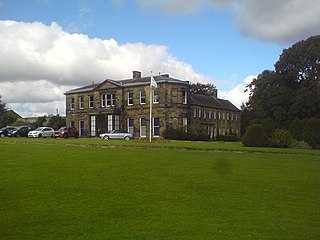
Farnley Hall is a stately home in Farnley, west Leeds, West Yorkshire, England. It is a grade II listed building. It was built in Elizabethan times by the Danbys. The manor is recorded in the 1086 Domesday Book as Fernelei, so it is probable that this house was a replacement for earlier medieval structures.

Little Aston is a village in the Lichfield District of Staffordshire, England. It is 5 miles (8 km) south of the city of Lichfield. It is contiguous with Sutton Coldfield and Streetly. At the 2011 United Kingdom census the population of Little Aston ward was 2,920 people living in 1,104 households. Little Aston is also in the parish of Shenstone.

Oakley Court is a Victorian Gothic country house set in 35 acres (140,000 m2) overlooking the River Thames at Water Oakley in the civil parish of Bray in the English county of Berkshire. It was built in 1859 and is currently a hotel. It is a Grade II* listed building that has been often used as a film location.
Edward Jervis Jervis, 2nd Viscount St Vincent was an English peer.

Colin Christopher Paget Tennant, 3rd Baron Glenconner was a British aristocrat. He was the son of Christopher Grey Tennant, 2nd Baron Glenconner, and Pamela Winefred Paget. He was also the nephew of Edward Tennant and Stephen Tennant, and the half-brother of the novelist Emma Tennant.

Grantley Hall is an English country house located in North Yorkshire, England. It is situated near Grantley, about 5 miles (8 km) to the west of Ripon, on the banks of the River Skell. It is listed Grade II* on the National Heritage List for England, and the Japanese garden at the hall is listed Grade II on the Register of Historic Parks and Gardens.

Debden House is a conference centre and campsite located in Loughton, Essex, England. The house is owned and operated by Newham London Borough Council.

Ravenscroft Hall is a country house standing to the east of the B5309 road about 1 mile (1.6 km) to the north of Middlewich, Cheshire, England. The house was built in 1837 for William T. Buchanan, replacing a former Jacobean house. It was extended, possibly in 1852 when the house was bought by the Moss family, and again in 1877. The house has since been divided into two dwellings. It is constructed in roughcast and yellow brick, with stone dressings and slate roofs. The house is in two storeys, with a main front of five bays, and a five-bay extension to the northeast. The garden front also has five bays. The house has an Ionic porch, and an Italianate belvedere. It is recorded in the National Heritage List for England as a designated Grade II listed building.

Narborough Hall is a Grade II* listed building in Narborough in Leicestershire. Believed to date from 1596 this Elizabethan manor house was built by James Meade, a local landowner. However, it was only after it was extensively remodelled in the mid-19th century that it became known as Narborough Hall. It is notable because of its construction from local pink granite.

Harptree Court is a Grade II listed building at East Harptree in the English county of Somerset. It was built around 1800 to designs by Charles Harcourt Masters.
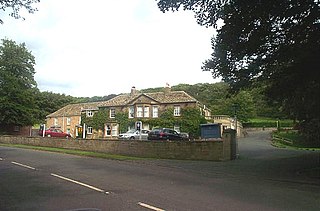
Wentbridge House Hotel near Pontefract, West Yorkshire, England, is an historical house of significance. It dates from 1700 and is built in the Georgian style. The house was occupied by many interesting people and was owned at one period by the Sayle family who lived in this area for several centuries. The property is now a hotel and provides accommodation, dining and function facilities
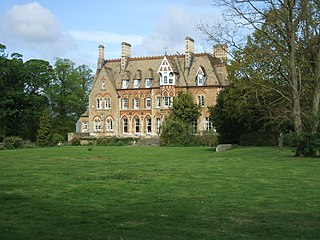
Milton Ernest Hall is a large grade I listed country house in the village of Milton Ernest, Bedfordshire, England. It now serves as a nursing home.
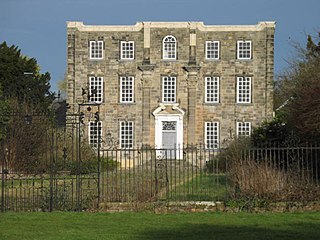
Scraptoft Hall is a former Georgian country house in the village of Scraptoft, Leicestershire, England. A Grade II* listed building, it has since been converted to apartments.
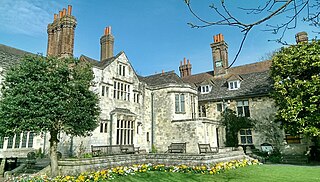
Southover Grange in Lewes, Sussex is a house of historical significance and is Grade II* listed on the English Heritage Register. It was built in 1572 by William Newton and owned by this family for the next three hundred years. After this it was the residence of many notable people until it was bought by the local Council in about 1945. Today it is owned by the East Sussex County Council. It now houses the Lewes Register Office which provides Marriage Ceremony Packages, civil partnerships and citizenship ceremonies. The gardens host events from local theatre to beer an gin festivals.
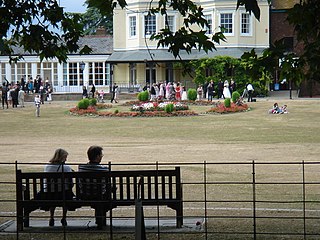
Court Garden in Marlow, Buckinghamshire, England, is a Grade II* listed building on the National Heritage List for England. It was built as a house in about 1758 by Dr William Battie, an eminent physician. It was sold in 1776 to Richard Davenport and remained in the Davenport family until 1894. It was then sold and became the home of the Griffin family for the next thirty years. The house and gardens were bought by public subscription in 1926, with the grounds being made a public park called Higginson Park. Since 1934 the house itself has served as council offices and as a venue for special events.
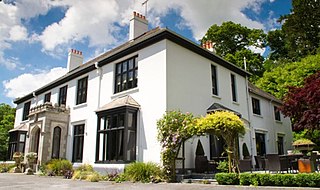
Glazebrook House is a building of historical significance in South Brent, Devon. Part of the house was built in about 1650 and was successively added to until it became the present structure. It was the residence of several notable people until 1972 when it was converted to a hotel. Today it is still a hotel which provides accommodation and restaurant facilities and caters for special events.
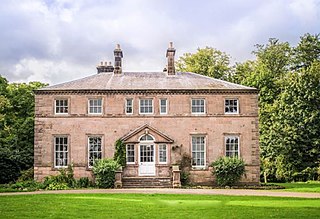
Charlton Hall near Ellingham, Northumberland is a building of historical significance and is listed Grade II* on the English Heritage Register. It was built in the late 18th century by the notable architect William Newton for the Cay family. It was the residence of several prominent people over the next three centuries and is now a luxury wedding venue.

Easby Hall near Richmond in North Yorkshire, England is a building of historical significance and is listed on the English Heritage Register. Built in 1729 by the Reverend William Smith, Easby Hall became the home of many notable people for the next two and a half centuries. It now provides bed and breakfast accommodation and is a venue for special events.

West Retford Hotel in Nottinghamshire is a building of historical significance and is Grade II listed on the English Heritage Register. It was built in the 18th century, possibly around 1740, and was the home of many notable people over the next two centuries. Today it is a hotel which provides accommodation, restaurant and bar facilities and caters for special events.
Swynfen Stevens Jervis was a British politician and writer, who represented Bridport in Parliament from 1837 to 1841.




















